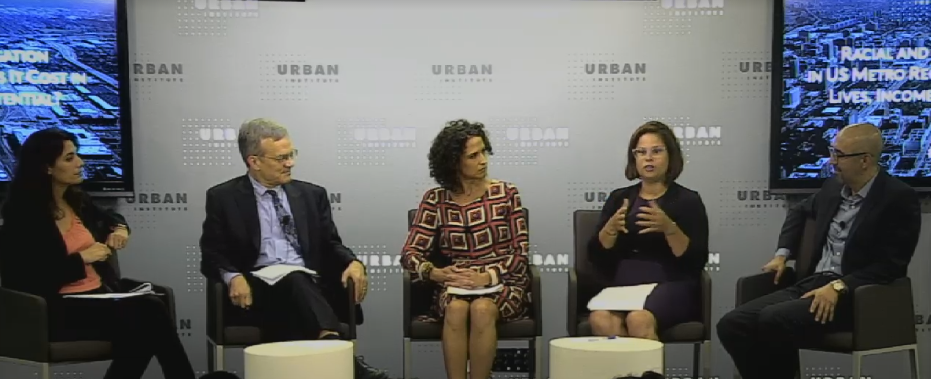How Racial and Economic Segregation is Harming Chicago and Other Major Cities
 More than 60 years after the U.S. Supreme Court’s landmark decision in Brown v. Board of Education, and subsequent pieces of antidiscrimination legislation, neighborhood segregation by race and income still plagues many American cities. A new report from the Urban Institute and the Metropolitan Planning Council seeks to quantify how that segregation affects the residents of the country’s most populous cities.
More than 60 years after the U.S. Supreme Court’s landmark decision in Brown v. Board of Education, and subsequent pieces of antidiscrimination legislation, neighborhood segregation by race and income still plagues many American cities. A new report from the Urban Institute and the Metropolitan Planning Council seeks to quantify how that segregation affects the residents of the country’s most populous cities.
Last week, the Urban Institute hosted a forum to discuss the findings from the study, The Cost of Segregation, which explores the economic and social cost to residents of racial and economic segregation in the 100 most populous metropolitan areas in the country, with a specific focus on the Chicago region.
In discussing the findings, Rolf Pendall, co-director of the Urban Institute’s Metropolitan Housing and Communities Policy Center and a coauthor of the report, described racial and economic segregation as a “product of the cycle of disinvestment,” resulting from both intentional fleeing of whites from cities and a lack of capital in poor urban communities. Pendall explained that people of color in low-income communities “who own businesses, housing, and land have fewer incentives to reinvest in their communities because the demand for housing and businesses in those communities is low.” These under-investments are then combined with low public investments and low tax bases to create urban ruin, concentrated in black and Hispanic neighborhoods.
Marisa Novara, vice president of the Metropolitan Planning Council, explained that many of the challenges facing Chicago are exacerbated by segregation. She reported findings showing that racial segregation lowers a neighborhood’s total average income and costs residents millions in potential earnings every year. In addition, Novara said, “segregation between blacks and whites increases homicide, and segregation between Latinos and whites decreases the overall municipal economy.” Chicago lost billions of dollars in GDP due to persistent segregation, according to the report.
Novara noted that involving all urban residents in the conversation about segregation, including those who are not low-income or people of color, helps to mobilize policymakers, employers, and civic leaders to think critically about the consequences of racial and economic segregation.
As detailed in the report, higher levels of economic and racial segregation correlate with lower median and per capita income for blacks. Furthermore, high levels of black-white segregation in neighborhoods correlate with reduced four-year college degree attainment for both blacks and whites.
Despite this grim picture, participants at the event said small improvements could make a big difference. If Chicago reduced its black-white segregation to the average of the top 100 commuter cities, the report’s authors project that black per capita incomes in the city would rise 12.4 percent and the city’s homicide rate would drop by 30 percent.
The potential for such improvements provide a hopeful reminder about the critical importance of finding innovative ways to reduce racial and economic segregation in all cities across the country.
